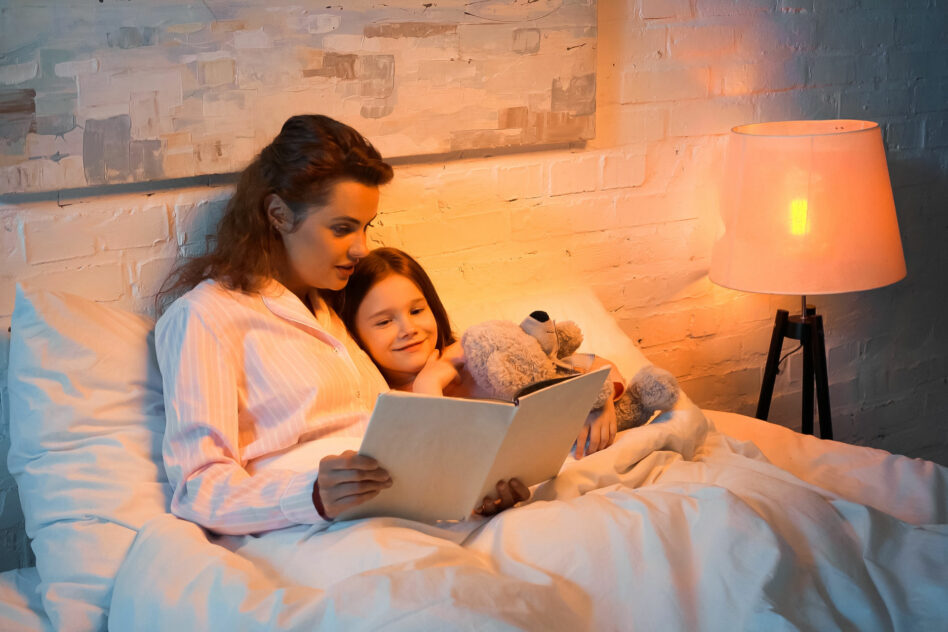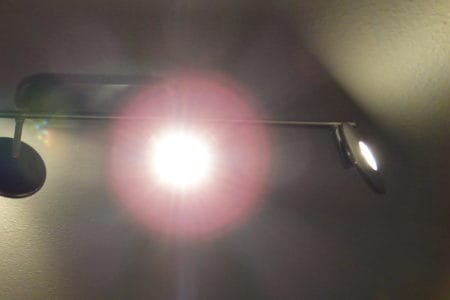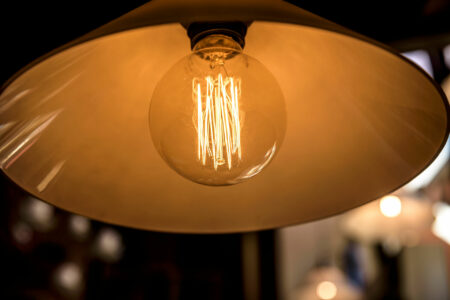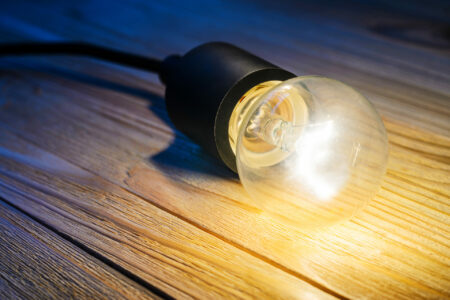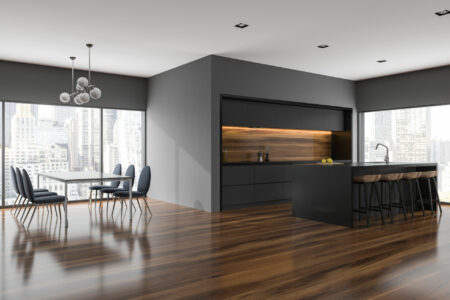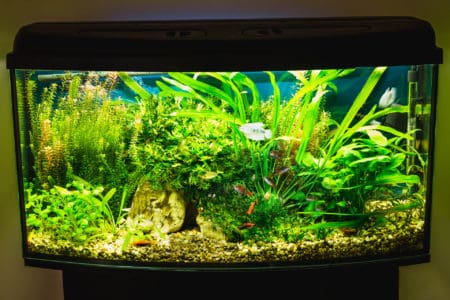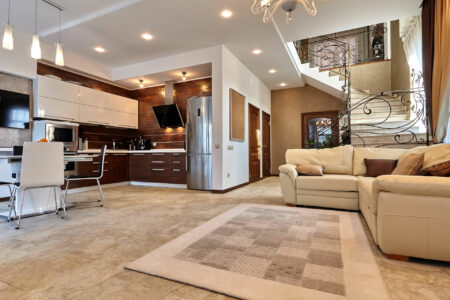Reading is one of the most satisfying hobbies, but it can become a literal headache if you don’t have adequate light to read by. Of course, proper daylight is always best, so it’s great to have a reading nook next to a window. But what if you want to read at night? Let’s check out the best options for dedicated reading lights.
You can use almost any light to read by. Proper ambient lighting in a room is nearly as good as daylight, but desk lamps and table lamps offer more direct benefits. The perfect lights for reading are clip-on reading lights that you can attach to your book and reading lamps to place around your neck.
What Makes A Good Reading Light?
Some room lighting isn’t adequate for reading. A good reading light should make it easy for you to read without placing strain on your eyes or discomforting others who may be sharing the room with you. That means it should be bright enough for reading but not too bright.
Reading Light Brightness
The required brightness of a reading light depends on where it will be located. Light becomes less bright as you move further away from it, so if you are reading in a room with only a ceiling light, it will have to be brighter than a focused desk light.
People often mistake the watts of a light to indicate the brightness, but even though it is usually related, you should look at the lumen rating of a light or a light bulb to determine if it will be good enough. For example, an LED light with lower watts will often have more lumens than an older incandescent bulb with higher watts.
If you are reading with a direct light source, like a desk lamp, you will need approximately 470 lumens. For reading in a room with general light, 800 lumens or more should be perfect, depending on the room size and where you will sit to read.
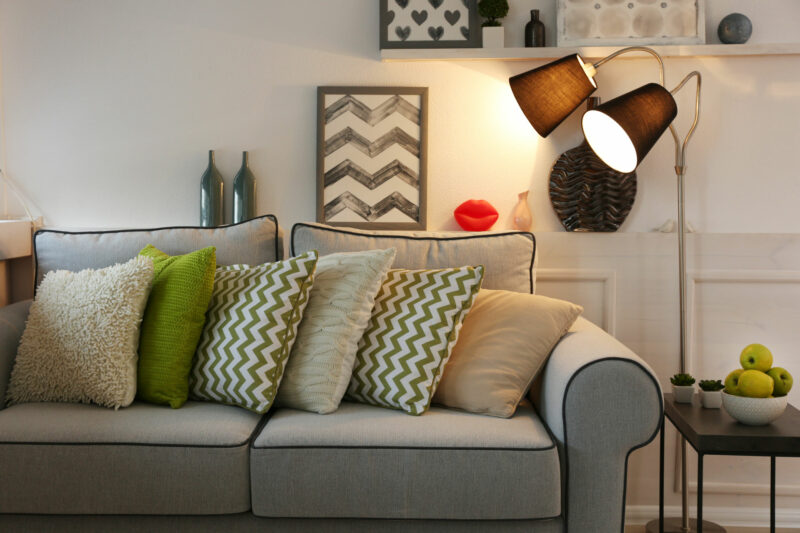
Reading Light Positioning
We already mentioned that you need higher lumens for light that’s further away or less focused. You could say that reading light positioning can fall into these categories:
- Daylight: This is the ultimate reading light, and it only requires that you open a few curtains to let enough of it in.
- Ambient light: This type of light comes from various light sources scattered around the room you are in, either from ceiling lights, floor lamps, table lamps, LED strip lights, or fluorescent lights. Ambient light can be bright enough, but it could bother other people in the room.
- Table or desk lamps: These are more focused light sources that can target a desk or particular area where you are reading.
- Wall reading lamps: These are spotlights mounted against the wall. You can swivel and adjust them to point to exactly where you will be reading, offering focused light that shouldn’t bother most other people.
- Targeted reading lamps, like the ones that clip onto books or fold around your neck. They provide light only where needed, with very little ambient light going past your book.
Blue Light Concerns
We’ve all heard about the concerns around blue light, which can interfere with your brain hormones and sleeping patterns, especially just before bed. Most light sources emit blue light, so if you are reading before going to sleep, you need to eliminate blue light in one (or more) of three ways:
- Special blue light-filtering light bulbs in your reading light
- Blue light-filtering glasses
- Light bulbs with much lower lumens
1. Ambient Light For Reading
Adequate ambient light is the best light to read by, especially if you’re reading in a dedicated room such as a study. You can ensure that you have plenty of light sources around you to raise the ambient light level enough for you to read without discomfort.
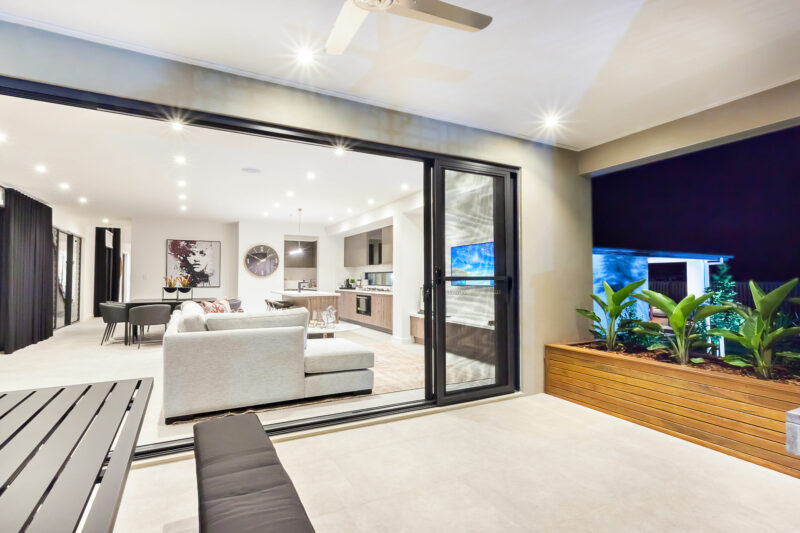
How Much Ambient Light Will You Need?
Creating adequate ambient light requires approximately 20 lumens per square foot. If you have a 150-square-foot room, you will need around 3,000 lumens to adequately light up that room for reading.
Luckily we don’t usually use an entire room for reading, so if you have enough ambient light in the spot where you will read (approximately 800 lumens), that will be sufficient.
Most ambient light options offer between 1,000 and 2,500 lumens, especially with newer LED light bulbs. That is more than adequate for reading, but some older 60W light bulbs may not be bright enough.
Ambient Light Options
There are plenty of options available to give you adequate ambient light. The most popular ones are:
- Low-Profile ceiling lights: These are the standard lights that most rooms have on their ceilings. They can be flush mount or semi-flush mount, with various colors and designs. They usually flood an entire room with enough ambient light for reading.
- Pendant lights: A pendant light is a light fixture with a single shade that hangs from the ceiling. These lights offer more focused light around a single part of a room, so hanging one directly above where you will read would be ideal.
- Wall sconces: These lights are fixed to the wall and pointed upwards, directing light toward the ceiling. They aren’t of much use for reading unless they are adjustable.
- Torchieres: These lights stand on the floor like floor lamps, but they point their light upwards to reflect off the ceiling, surrounding the area with light. They can create enough light for reading, though the light tends to be very soft because it bounces from the ceiling.
Disadvantages Of Ambient Light For Reading
There are a few disadvantages to using ambient light for reading:
- Ambient light affects everyone in the room. If someone wants to sleep, they won’t be able to if they’re a light sleeper, and ambient light could create too much glare if someone else wants to watch TV, for example.
- Ambient light has no blue light filtering, so it’s not a great idea to read with ambient light just before bed.
2. Desk Reading Lamps
A desk reading lamp is an ideal companion if you like to read at a desk or spend a lot of time studying rather than just casually reading.
These lights usually come with a stand to place on top of your desk or table or a clamp to attach to the edge of your desk. Some even have screw-in fixtures, so you can permanently mount them to the desk or the wall above your working area.
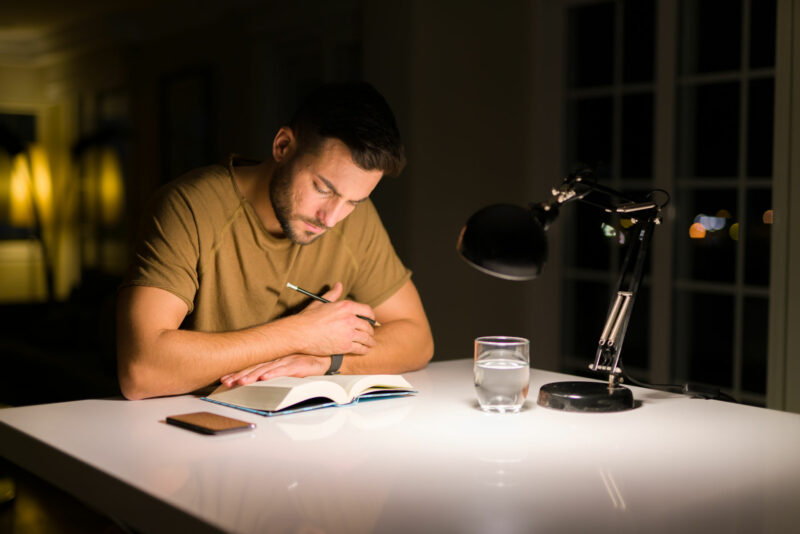
They offer a direct flow of light aimed straight at the area where you are reading, and the lamps are often adjustable to improve their aim.
The Brightness Of Desk Lamps
Some desk lamps come with adjustable brightness settings. You can often switch between four different light levels to get the setting you’re comfortable with. Some of these settings also make the light softer and warmer, and a few even filter out blue light.
A desk lamp with approximately 470 lumens will be sufficient for reading. You could even manage with less, around 400 lumens, depending on how close the light is to your book.
3. Table Lamps For Reading
A bedside lamp is an excellent example of a table reading lamp, but a light on a table next to a couch could work just as well. Table lamps are often intended to add to ambient light, but since they mostly light up a small area around them, they are also ideal for reading.
Bedside table lamps come in two variations: fixed and adjustable. The fixed kind is the most well-known and oriented more towards ambient light, though they still work for reading. An adjustable table light works a bit like a spotlight in how it focuses the light onto a tiny area.
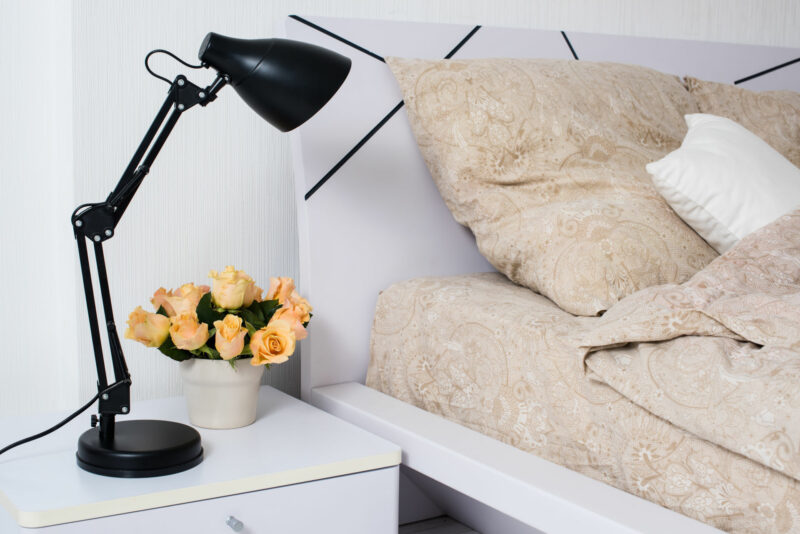
Adjustable table lamps are ideal for reading since you can focus the light on your book. They are also less intrusive than regular table lamps since they won’t bother other people too much.
The Brightness Of Table Lamps
A table lamp should have a similar brightness to a desk lamp, which is approximately 470 lumens. The adjustable kind could go even lower than that and still offer plenty of light for reading.
Bedside Table Lamps And Blue Light
If you’re using a bedside table lamp for reading, there’s a good chance you will turn off the lamp and sleep at some point. That’s why a bedside table lamp should have a dedicated light bulb to filter blue light.
For example, some bedside lamps have amber or even red light bulbs. It may seem strange, and you may wonder how well you can read with them, but they create quite a warm glow that’s perfect for reading. At the same time, they filter out all the blue light, allowing you to get a peaceful night’s sleep.
4. Wall-Mounted Lights For Reading
Certain wall-mounted lights can be ideal to use as reading lamps, particularly the ones that can be adjusted to shine on the ceiling. These lights have swivel heads that can turn at different angles to light up separate corners of your room or ceiling, but this functionality also makes them ideal reading lights.
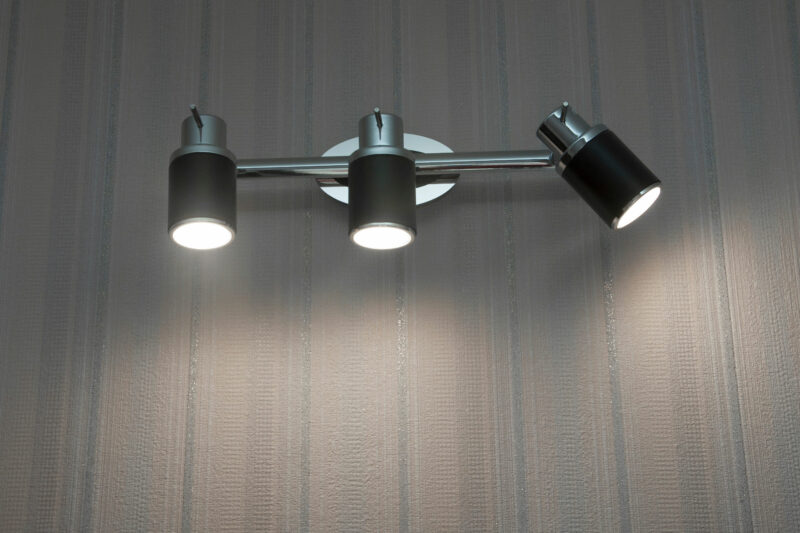
If you have a reading nook or a couch in a room with some of these lights, you can swivel one around to shine directly on the book you will be reading. This will allow you to turn off all the other lights so that you won’t bother anybody else, but you will still be able to read.
Brightness Of Wall-Mounted Lights
Because wall-mounted lights are usually intended for ambient lighting, they tend to have a brightness between 1,000 and 2,500 lumens. This is ideal since the light won’t be directly above your book, so the fact that it shines at that brightness will light up the book effectively without being too bright.
Of course, the lumens will depend on where the light is mounted and which light bulb it has. For example, it’s pretty common to install these wall-mounted lights above a bed where they can double as bedside lamps. You can flip them around to shine against the wall and ceiling in the early evening for aesthetics, then tilt them back to shine on your book when you go to bed.
These lights might have lower-lumen light bulbs to accommodate this fact; you might get approximately 470 lumens from them.
5. Dedicated Reading Lights
A dedicated reading lamp has only one purpose: lighting your book so you can read. They aren’t limited to any particular location, room, or area since the idea is to carry them with you whenever you want to read somewhere in the dark.
There are two basic types, though there are various implementations of each:
- A clip-on book lamp: These are tiny lights attached to an adjustable fitting that can clip onto your book. In other words, the light is attached directly to the book, and you can adjust its angle. They usually light up only one page at a time, so you must re-adjust the light every time you turn a page.
- Neck reading lamps: These are bendable lights that go around your neck, so instead of attaching the light to your book and having to re-adjust it every time you turn a page, you can simply adjust the angle of the light around your neck to ensure that it’s shining where it should.
Brightness Of Dedicated Reading Lights
These reading lights are not meant for anything else. You can barely use them as flashlights or bedside lamps. Because of that, they are positioned close to the pages of your book, so they don’t need to be very bright. Their lack of brightness helps to make them the perfect reading lights if you’re sharing a room with someone else.
Most of these lights have between 150 and 300 lumens. The clip-on kind will often fall into the lower-lumen category since it’s closer to the page, but exceptions exist. Also, because these lamps are usually battery-powered and often rechargeable, the low brightness helps to save battery life, too.
